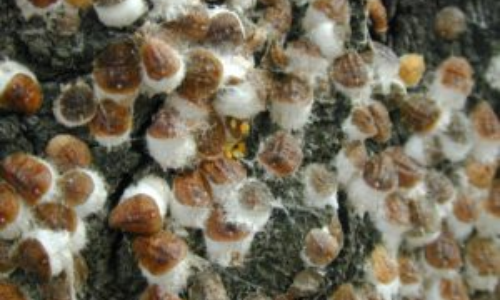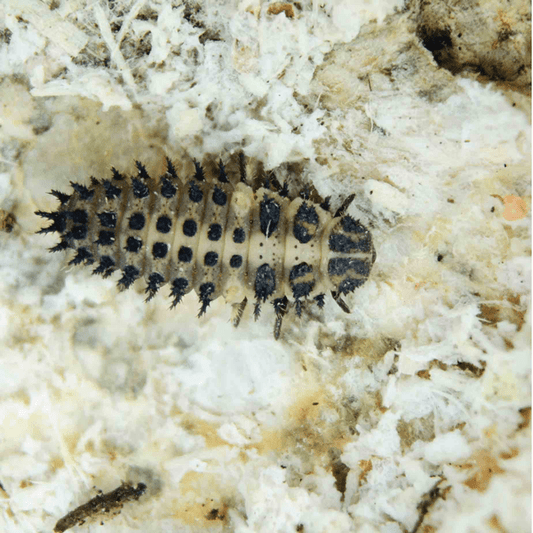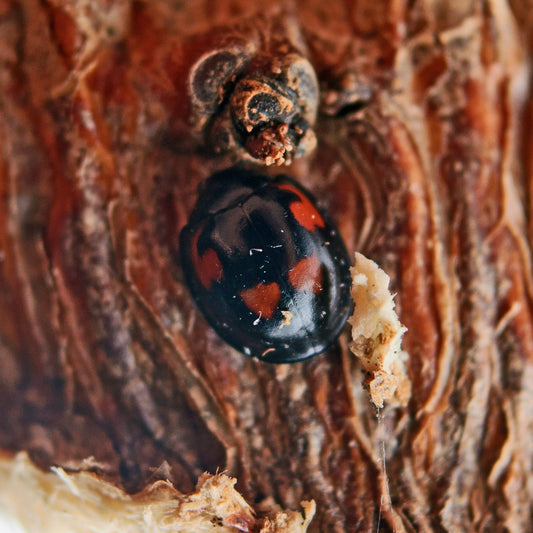
How to recognize horse chestnut scale
The horse chestnut scale, Pulvinaria regalis, belongs to the group of wooly aphids. The females are brown and have an oval- and spherical body shape. The eggs are deposited in white wooly egg sacs which are formed in late spring and early summer on the tree trunk. During summer the eggs will develop in young crawlers, which move towards the leaves where they settle and grow until fall. Before the three sheds its leaves, the scales move to the branches where they will remain during winter. During winter they barely feed. Young stages reside, depending on the season, on the leaf, petiole or branch. Adult stages can be found on the tree trunk.
Horse chestnut scale damage
The place of origin is probably Japan. During the sixties the pest was first observed in Europe. The scale has since been observed in France, Belgium, Germany and England and its living area is still spreading. The horse chestnut scale has many host plants, but is mostly found on chestnut and linden trees in urban areas.
Damage is mainly cosmetic. Large amounts of honeydew are produced during heavy infestations. The honeydew acts as a growth medium for black sooty mold fungus which will turn the leaves black, which in turn hampers photosynthesis.
Products against horse chestnut scale
-
EXOCHOMUS QUADRIPUSTULATUS larvae - 50
Vendor:Entocare eigen kweekRegular price €32,50 EURRegular priceUnit price / per€32,50 EURSale price €32,50 EUR -
EXOCHOMUS QUADRIPUSTULATUS adults - 25
-
Life cycle horse chestnut scale
1000 eggs per female
young stages light brown, adult stages round
white egg masses formed in June/July
young stages reside on leaf, petiole or branch
adult stages reside on trunk -
Host plants horse chestnut scale
maple
chestnut
linden tree
-

Horse chestnut scale
-



